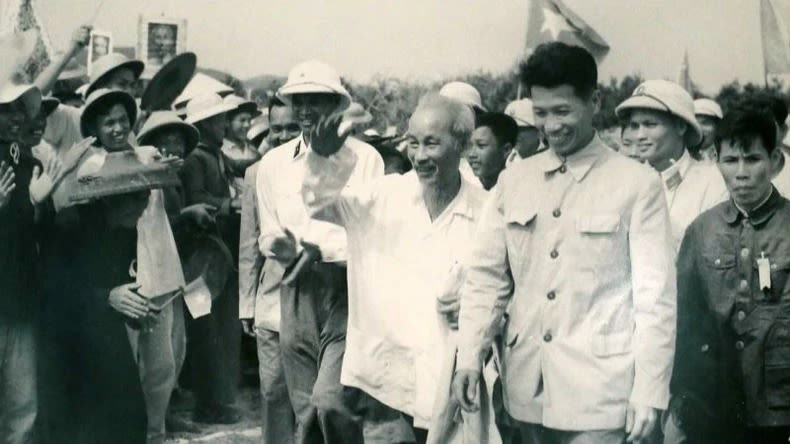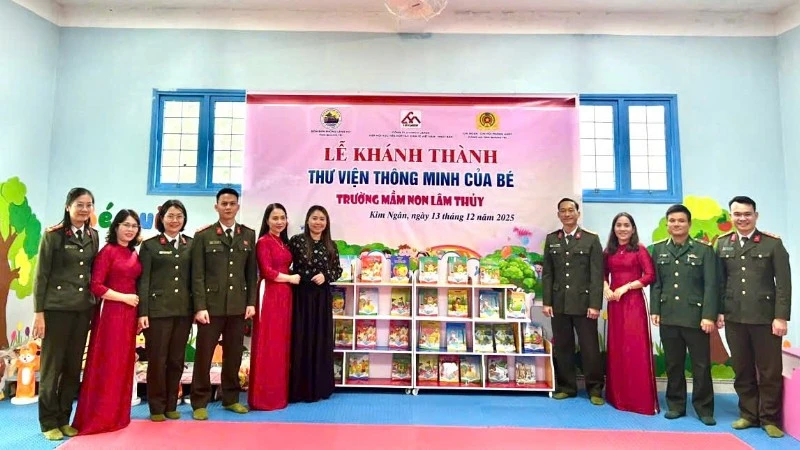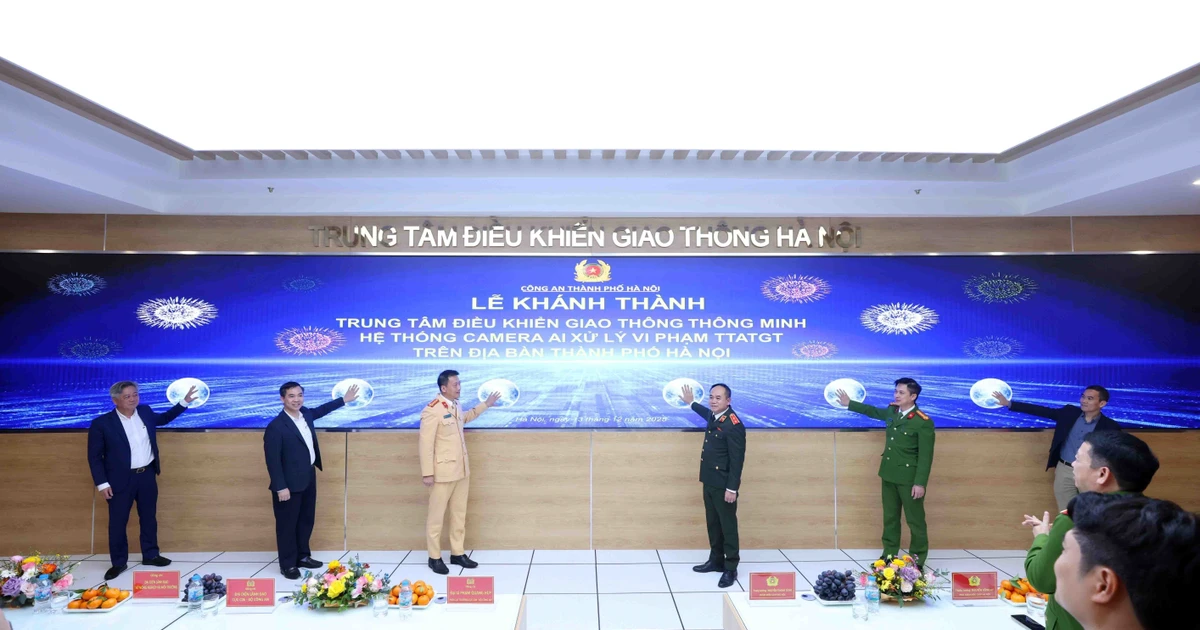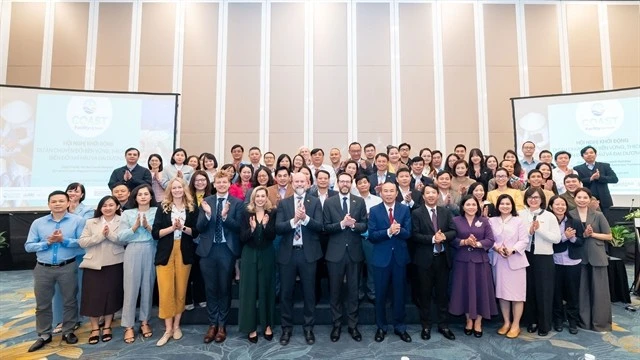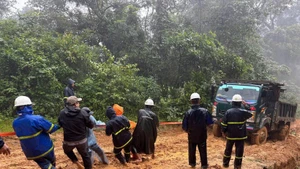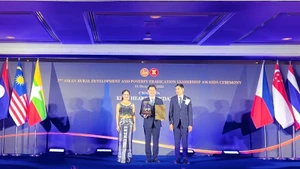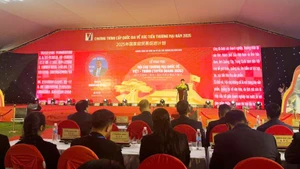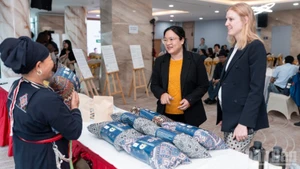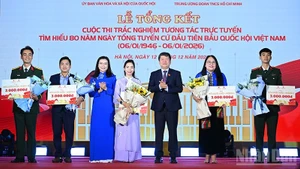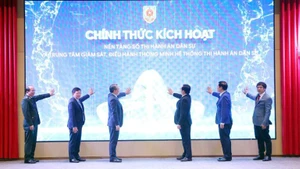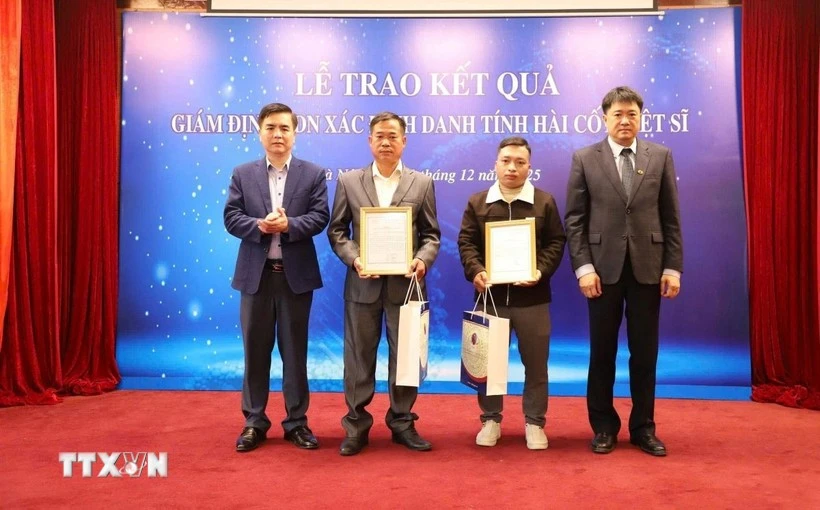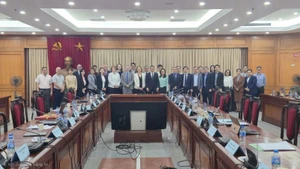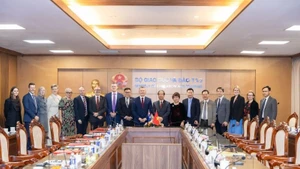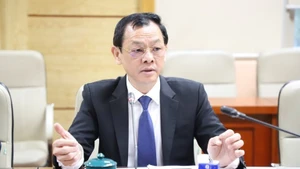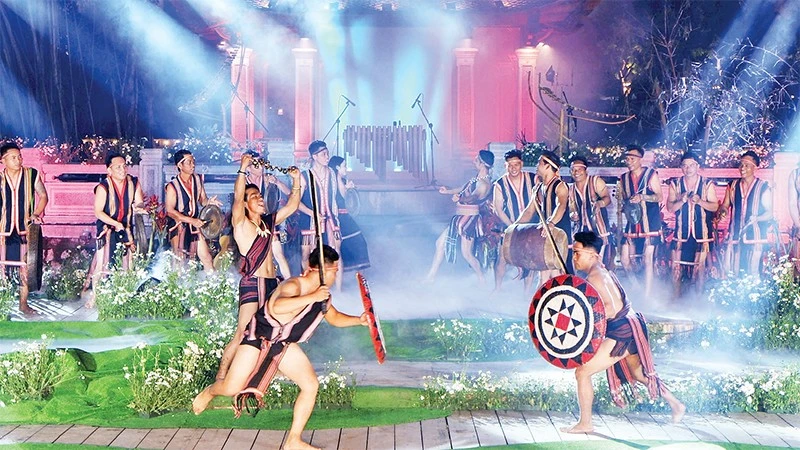The Special National Historic Site covers more than 2,200 m2 in the island’s southwest. It comprises several components: a statue of President Ho Chi Minh, a temple, and a memorial exhibition house, among others.
In 2003, Co To District undertook a project to restore and embellish the Memorial Area, including the construction of a new temple dedicated to President Ho Chi Minh, situated behind the original statue.
“This is a national heritage, a cultural and sovereign landmark of the Fatherland in the northeast sea. For the officers, soldiers, and residents of the island, it is a sacred asset and a politically significant landmark. It also holds multiple values in terms of landscape, culture, and history, contributing to the transformation of the island into a dynamic maritime economy and a centre for services and tourism,” emphasised Le Ngoc Han, Secretary of Co To District’s Party Committee.
During his lifetime, despite an extremely busy schedule, Uncle Ho gave exceptional attention to Quang Ninh Province, visiting it nine times. Notably, he once made a special visit to Co To Island.
According to historical records, around 8 am on May 9, 1961, the President departed from Tra Co by helicopter to visit the island’s residents and soldiers. Upon landing, he warmly greeted the elderly, encouraged officers and soldiers, and distributed gifts to local schoolchildren.
He reminded the people: “Although the capital Ha Noi is far from the islands, the Party and Government always care about islanders and hope the people remain united and progressive.”
As he passed a nearby sweet potato field, he inquired about the yield and quality of the crop. Hoang Chinh, then Secretary of the Hai Ninh Provincial Party Committee, pulled up a plant to show him. Seeing the large tubers, the President expressed his satisfaction and praised the high productivity. He then proceeded to the salt fields, where he personally operated the water pump to draw seawater into the salt pans.
Though his visit was brief, it left an indelible emotional imprint on the island’s people, officers, and soldiers.
In 1962, when Uncle Ho visited the mining region again, Hoang Chinh conveyed the people's wish to erect a statue of him on Co To Island. The President agreed, granting Hai Ninh Province permission to proceed.
In August 1945, while the nation had gained independence, Co To was still under French control. Not until 1954, when peace was restored in the North, did the red flag with a yellow star fly over the island. Perhaps because of its strategic importance, Co To became the only place in Viet Nam where President Ho Chi Minh authorised a statue of himself to be erected while he was still alive. The bust was sculpted by Nguyen Van Que, an officer of the Quang Ninh Department of Culture.
From 1964 to 1967, the escalation of US bombing campaigns against the North, particularly in the mining region, delayed the statue's construction. Not until 1968 did the works begin, and on May 22 that year, they were completed. The bust stands 1.8m tall, with a 4m pedestal, placed at the spot where the President had addressed local officials and residents.
In 1974, with approval from the Ministry of Culture and Information, the Quang Ninh Province invested in enhancing the memorial site. A full-body statue of President Ho Chi Minh in reinforced concrete was erected, completed in May 1976 to mark the 15th anniversary of his visit and his 86th birthday.
The statue was designed by sculptor Nguyen Phuoc Sanh, then Head of the Sculpture Department at the Hanoi University of Fine Arts (later becoming Rector of the Ho Chi Minh City University of Fine Arts). The original bust was moved to the centre of Cam Pha District (now Van Don District).
In 1997, the statue was replaced with a monolithic granite version, 4.18m tall on a 2.8m pedestal, preserving the original design by Nguyen Phuoc Sanh to ensure longevity and durability.
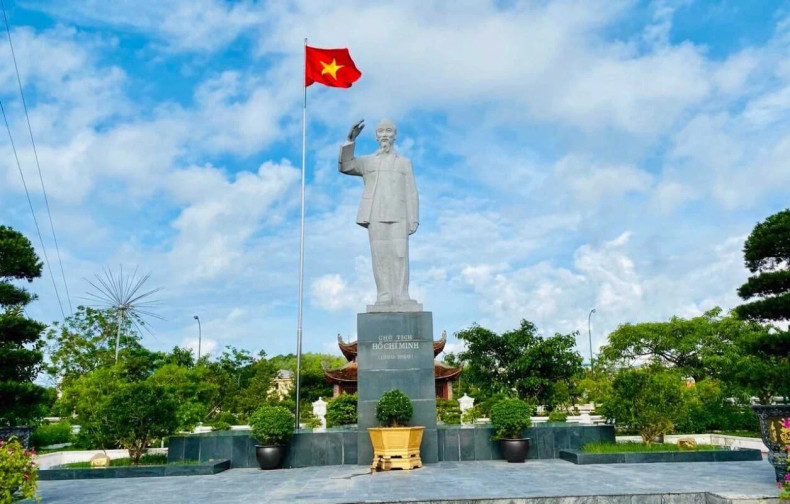 |
| The statue of President Ho Chi Minh on Co To Island is a source of pride and honour for the armed forces and people of this frontier district. (Photo: nhandan.vn) |
Behind the statue, a plaque commemorates President Ho Chi Minh’s visit to Co To Island on May 9, 1961. It reads: “Here, at 8 o’clock on May 9, 1961, the helicopter carrying President Ho Chi Minh landed. He stepped off the aircraft, smiling and waving to greet the officials, soldiers, and ethnic residents of the island who had gathered to welcome him.”
More than 60 years have passed since the President’s visit, yet for those living on this frontier outpost, every footprint he left on Co To still resonates. His warm voice seems to linger in the sea breeze. Each resident of Co To now stands as a “cultural marker,” resiliently safeguarding this northeastern gem of the Fatherland, ensuring it grows ever more prosperous and civilised.
Standing beneath the flag tower, with the national flag fluttering in the wind, Secretary Le Ngoc Han shared that on May 9, Co To Island solemnly held a flag-raising ceremony, national anthem singing, and tribute offering to commemorate the 64th anniversary of President Ho Chi Minh’s visit (May 9, 1961–2025). Events were held simultaneously at three locations: the Memorial Area’s square, the national flagpole in Thanh Lan Commune, and the national flagpole on Tran Island.
It was the largest flag-raising ceremony ever held on the island, attended by over 2,000 officials, soldiers, residents, and tourists. They gathered to pay tribute to President Ho Chi Minh. As the national anthem echoed across the island, a 4.5 by 6.2m flag was hoisted up the 29.7m-high pole – modelled precisely on the flag and mast at Ba Dinh Square.
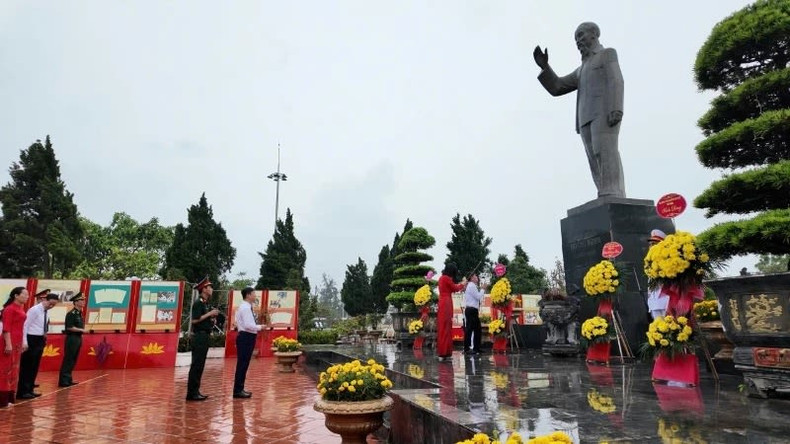 |
| The Party Committee, authorities, armed forces, and people of Co To Island District offer incense and flowers to commemorate the 135th anniversary of President Ho Chi Minh’s birth. (Photo: nhandan.vn) |
Once a poor and underdeveloped island district, Co To now has access to the national power grid and freshwater, and boasts an expanding fleet of passenger and freight vessels. The local economy has consistently maintained double-digit growth, with a robust shift towards services and tourism.
Recently, the District People’s Council approved a resolution to merge its existing two communes and one town (Co To Town, Dong Tien Commune, and Thanh Lan Commune), forming a new administrative unit named the Co To Special Zone. This is expected to open up significant development opportunities. Once established, the Special Zone will span 5,368 ha with a population of 7,151, maintaining the current administrative boundaries.
In 2025, Co To aims to welcome over 300,000 tourists, generating 1 trillion VND (38.5 million USD) in revenue. On the first day of the recent April 30 holiday, the island received over 9,000 visitors – a “record-breaking” start to a promising summer season.
Alongside tourism development, the island is also striving to implement a model of green, clean, and sustainable tourism, closely tied to preserving marine ecosystems and safeguarding local cultural heritage. These initiatives are seen as crucial steps in Co To’s sustainable marine tourism strategy.
